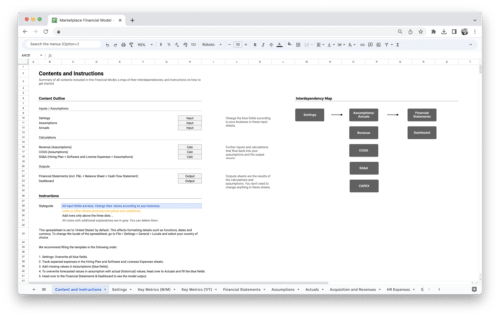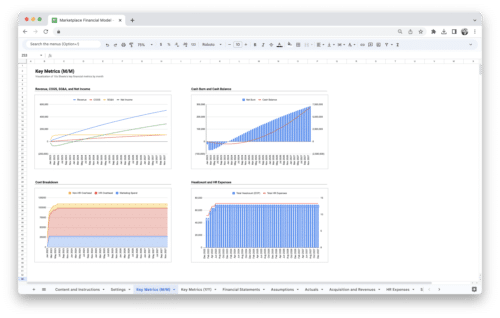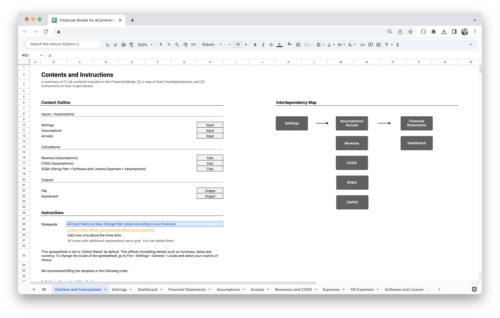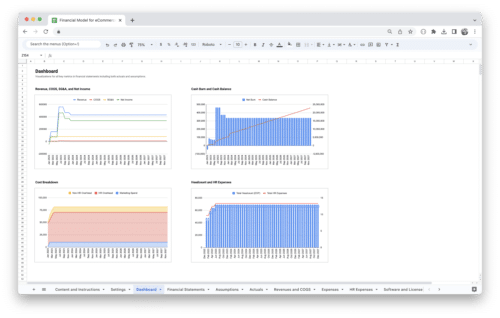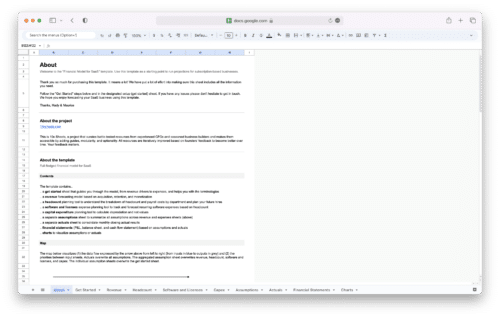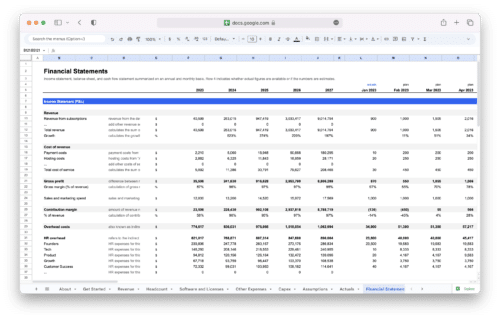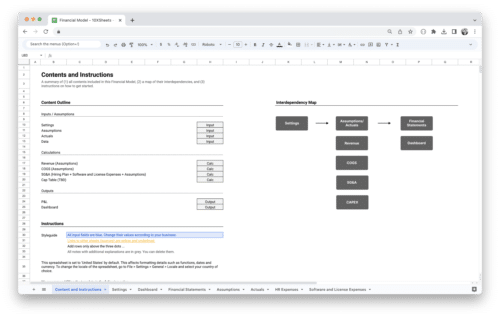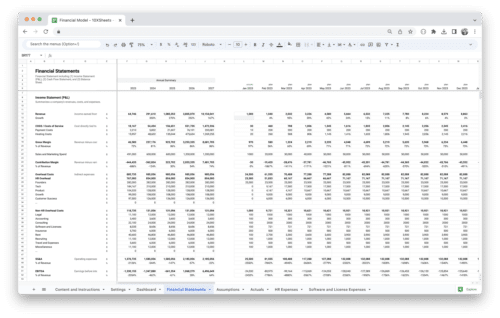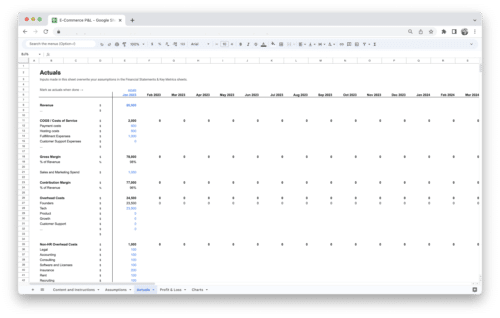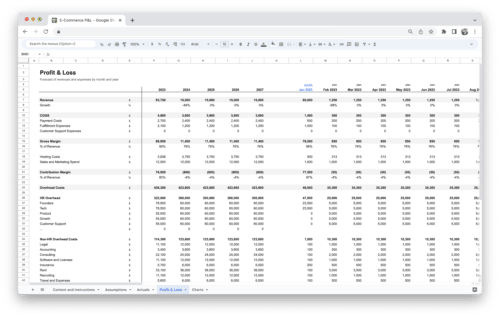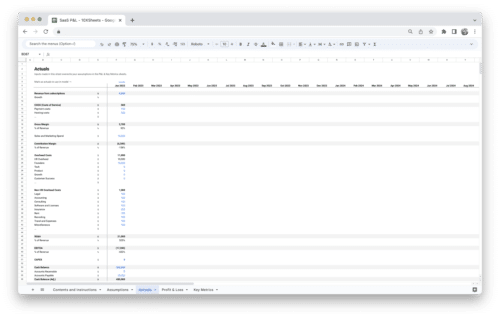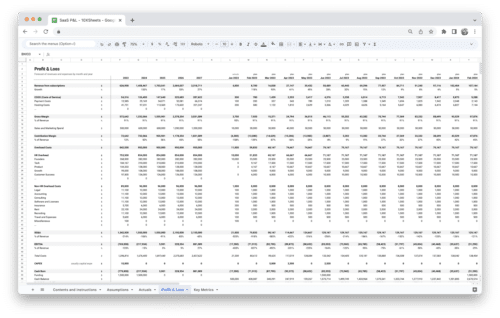
Are you wondering how companies decide which big projects to invest in? Whether it’s upgrading equipment, launching a new product, or expanding into a new market, capital budgeting is the process that helps businesses make these crucial decisions. It’s all about figuring out which projects will bring in the most value for the money spent, while balancing risk and rewards.
In this guide, we’ll break down the essentials of capital budgeting—how it works, why it’s important, and the methods used to evaluate investment opportunities.
What is Capital Budgeting?
Capital budgeting is the process through which a business evaluates and decides on long-term investments or projects that require significant capital expenditures. These investments could involve purchasing new equipment, expanding facilities, launching new product lines, or acquiring assets that will generate future cash flows over time. The goal of capital budgeting is to determine whether these investments will provide sufficient returns to justify the initial costs.
At the heart of capital budgeting is the assessment of projected cash inflows and outflows over the life of the investment, adjusted for the time value of money. This process allows businesses to prioritize their spending on projects that will contribute to their long-term growth and profitability, while also minimizing financial risks.
Importance in Financial Decision Making
Capital budgeting is crucial to the financial health and success of a business. It guides decision-makers in choosing investments that will generate the best returns over time while balancing risk and resource allocation. This process ensures that capital is spent wisely, with an eye on maximizing shareholder value and supporting strategic business goals.
- Resource Allocation: Capital budgeting helps allocate financial resources efficiently, ensuring that investments are made in projects that provide the highest returns and align with the company’s strategic priorities.
- Profitability Assessment: It provides a framework for assessing the long-term profitability of potential investments, allowing businesses to forecast expected returns and determine if a project is worth pursuing.
- Risk Management: By evaluating and analyzing the risks associated with different investments, capital budgeting allows businesses to make informed decisions that mitigate potential losses and reduce uncertainty.
- Cost Control: Capital budgeting helps control costs by ensuring that investments are carefully planned and executed within budget constraints. It also helps prevent overinvestment in projects with low return potential.
- Strategic Alignment: The process ensures that investment decisions are aligned with the company’s overall strategy and growth objectives, supporting both short-term goals and long-term vision.
Role of Capital Budgeting in Business Growth and Investment Strategy
Capital budgeting plays a central role in driving business growth and shaping investment strategy. It directly influences how a company allocates its resources toward new opportunities that support expansion, innovation, and market competitiveness. Well-executed capital budgeting decisions can fuel growth by directing investments toward the most lucrative and strategically important projects.
Effective capital budgeting ensures that companies invest in projects that align with their overall business strategy, whether that’s entering new markets, upgrading technology, expanding capacity, or developing new products. Through careful evaluation, businesses can choose investments that not only generate strong returns but also strengthen their position in the marketplace, contributing to long-term sustainability and success.
By focusing on high-value, high-growth projects, capital budgeting can help a business achieve its strategic objectives, increase market share, and ultimately enhance profitability. It also helps businesses remain agile by allowing them to adapt to changing market conditions, technological advances, and evolving consumer needs.
Key Concepts in Capital Budgeting
Capital budgeting is a complex process that requires a deep understanding of various financial concepts. These core ideas help determine whether a particular investment project will provide value and how to assess the potential risks and rewards. As you explore capital budgeting, you’ll frequently encounter investment characteristics, the time value of money, and various risks that play crucial roles in shaping your decisions.
Investment Projects and Their Characteristics
Investment projects are typically long-term undertakings that require significant upfront capital and generate returns over extended periods. These projects are crucial for business growth, such as expanding production capacity, launching new products, or acquiring new assets. The distinguishing features of investment projects lie in their size, complexity, and the capital required to fund them.
One of the primary characteristics of an investment project is the initial capital outlay, which is the upfront investment needed to initiate the project. This could include purchasing machinery, constructing facilities, or acquiring technology. It’s essential to accurately estimate the total costs involved in setting up the project to ensure that the expected returns outweigh these initial expenses.
Another key element is the cash flow projection. Unlike regular expenses, investment projects generate returns over several years, which might vary depending on the nature of the project and market conditions. These future cash inflows are uncertain, and it’s crucial to assess how well they align with your financial goals. In addition, projects often come with a project duration, which spans over multiple years, making long-term planning and forecasting critical for success.
Lastly, every investment project carries risk and uncertainty. Due to the long-term nature of these projects, future outcomes are hard to predict with precision. Variations in market demand, changes in technology, regulatory shifts, and economic fluctuations can all impact the profitability of a project. The ability to manage these risks is central to making informed capital budgeting decisions.
Time Value of Money and Cash Flow Analysis
One of the most fundamental principles in capital budgeting is the time value of money (TVM). This concept is based on the simple idea that money today is worth more than the same amount of money in the future. The reason for this is that money can be invested today to earn a return, which wouldn’t be possible if you were to receive the same amount of money later.
When applying the time value of money to capital budgeting, it’s essential to recognize that the value of future cash flows is not equal to their nominal amount. To account for this, discounting is used to adjust future cash flows to their present value. This ensures that the cash flows generated over the life of an investment are evaluated in terms of their worth today, considering the time value of money.
Cash flow analysis is the backbone of capital budgeting. You must estimate the inflows (revenues or savings) and outflows (expenses or costs) that will occur over the life of the investment. These projections typically span several years and are subject to uncertainties. It’s important to project cash flows as accurately as possible, considering factors like inflation, expected revenue growth, operational costs, and tax implications. The cash flow projections should provide a clear picture of how the investment will perform financially over time.
Once you’ve identified the expected future cash flows, they need to be discounted back to their present value using a discount rate, which often reflects the cost of capital or a rate of return that you expect to earn. This process allows you to assess whether the project is worthwhile, as you can compare the initial investment cost to the discounted value of future cash flows. In essence, it helps you answer the critical question: Will this project create value today?
Risk and Uncertainty in Capital Budgeting Decisions
Risk and uncertainty are inherent in capital budgeting decisions, and understanding how to assess and manage these factors is crucial to making smart investment choices. No matter how well you plan, the future is always uncertain, and your investment returns can be influenced by a wide range of unpredictable factors.
Market risk is one of the most significant types of risk. It involves changes in the economic environment, such as fluctuations in demand for your product or service, changes in consumer preferences, or general economic downturns. For example, if you’re investing in a new product line, a downturn in the market or a shift in consumer tastes could dramatically affect your returns.
Another form of risk is operational risk, which comes from issues within your company or the project itself. This can include challenges such as delays in construction, unforeseen operational costs, or inefficiencies in production. For instance, if you’re investing in upgrading your manufacturing facilities, unexpected issues like labor strikes or equipment failures can negatively impact the expected returns.
Financial risk relates to the capital structure and the sources of funding for the investment. If the project is financed through debt, you might face higher interest costs, which could make the investment less profitable. Additionally, changes in interest rates or fluctuations in currency exchange rates can introduce financial risks, particularly for international projects or those involving debt-based financing.
Given these various risks, it’s critical to apply methods like sensitivity analysis and scenario analysis to gauge how changes in key variables (such as market conditions or operational performance) will affect the project’s success. Sensitivity analysis involves changing one variable at a time to observe how it impacts the project’s NPV or IRR. Meanwhile, scenario analysis considers multiple variables changing simultaneously, providing a broader view of potential outcomes.
To mitigate risks, you can also incorporate risk-adjusted discount rates, which involve increasing the discount rate to account for higher uncertainty. This ensures that you’re properly compensating for the added risk, making the investment more attractive if it still provides positive returns even with a higher risk factor.
Ultimately, risk management in capital budgeting is about being realistic and preparing for a variety of outcomes. By accurately assessing the risks and uncertainties involved, you can make informed decisions that protect your business and position it for long-term success.
Capital Budgeting Methods
Capital budgeting involves choosing the right projects to invest in. To make these decisions, there are several widely used methods that help evaluate potential investments, each offering a unique way to assess the financial viability of a project. These methods give you the tools you need to compare various investment opportunities based on their projected returns, costs, and risks.
Net Present Value (NPV)
The Net Present Value (NPV) method is one of the most reliable and commonly used approaches to capital budgeting. NPV is a financial metric that helps you determine the value of an investment in today’s terms, by discounting its future cash flows. This allows you to assess whether an investment will add value to your business over time.
At its core, NPV calculates the difference between the present value of expected cash inflows and the present value of cash outflows. If the NPV is positive, it indicates that the project is expected to generate more value than the cost to finance it, making it a good investment. On the other hand, a negative NPV suggests that the investment will result in a loss.
The NPV formula is:
NPV = Σ (Cash Inflow / (1 + r)^t) – Initial Investment
Where:
- Cash Inflow = The expected cash flow during each period
- r = The discount rate (typically the company’s cost of capital or a required rate of return)
- t = Time period
- Initial Investment = The upfront cost required to initiate the project
NPV is powerful because it accounts for both the time value of money and the risk involved. However, choosing the right discount rate is critical—too high a rate can make an otherwise good project look unappealing, while too low a rate can overestimate the value of the investment.
Internal Rate of Return (IRR)
The Internal Rate of Return (IRR) is another key method used to evaluate investment opportunities. IRR is the discount rate that makes the NPV of the project equal to zero. In other words, it’s the rate at which the investment breaks even in terms of its net present value. IRR helps you understand the potential return of an investment in percentage terms.
The higher the IRR, the more attractive the investment. It’s often compared to a company’s required rate of return or cost of capital. If the IRR exceeds the cost of capital, it suggests that the project is worthwhile. However, if the IRR is below the required rate of return, the investment is likely not a good choice.
The formula for IRR is:
0 = Σ (Cash Flow / (1 + IRR)^t) – Initial Investment
Where:
- Cash Flow = The projected inflows at each period
- IRR = The internal rate of return you are solving for
- t = The time period
- Initial Investment = The upfront investment cost
IRR has the advantage of being easy to understand and express as a percentage. However, it does have limitations. For instance, if there are multiple cash inflows and outflows over time, there could be multiple IRRs, making it difficult to interpret. Additionally, IRR assumes that cash flows can be reinvested at the same rate, which is not always realistic.
Payback Period
The Payback Period is one of the simplest methods to evaluate an investment. It calculates how long it will take for the investment to repay its initial cost from its cash inflows. Essentially, it measures the time needed to “break even” on the project.
While it’s an easy method to use and provides a quick assessment of liquidity, it doesn’t consider the time value of money or cash flows that occur after the payback period. This makes it less suitable for long-term projects with significant cash flows beyond the payback period.
The formula to calculate the Payback Period is:
Payback Period = Initial Investment / Annual Cash Inflow
Where:
- Initial Investment = The total cost of the project
- Annual Cash Inflow = The expected inflow each year
The Payback Period method is useful when you need to know how quickly you can recover your investment, especially in industries where cash liquidity is crucial. However, its simplicity is both a strength and a limitation—it doesn’t tell you anything about the profitability or long-term value of the project, nor does it account for risks or future cash flows beyond the payback period.
Profitability Index (PI)
The Profitability Index (PI) is a ratio that compares the present value of future cash inflows to the initial investment. It’s a useful tool when you have to decide between multiple projects with different sizes or initial costs. A PI greater than 1 indicates that the project is likely to generate more value than it costs, while a PI below 1 suggests the opposite.
The PI can be thought of as a measure of “bang for your buck” because it shows how much value you can expect per dollar invested. The higher the PI, the more attractive the investment. It’s particularly useful when capital is limited and you need to prioritize investments.
The formula for the Profitability Index is:
PI = Present Value of Cash Inflows / Initial Investment
Where:
- Present Value of Cash Inflows = The sum of the discounted future cash flows
- Initial Investment = The upfront capital required for the project
A PI greater than 1 means the project should add value to the business, while a PI less than 1 suggests that the project will result in a net loss. The Profitability Index method is beneficial because it can be used to evaluate multiple projects in situations where resources are constrained, helping you select the most promising investments.
Modified Internal Rate of Return (MIRR)
The Modified Internal Rate of Return (MIRR) addresses one of the limitations of the traditional IRR method, specifically the assumption that positive cash flows are reinvested at the same rate as the IRR. MIRR assumes that positive cash flows are reinvested at a more realistic reinvestment rate, typically the firm’s cost of capital, rather than the IRR.
MIRR is particularly useful for projects with fluctuating or non-constant cash flows, as it gives a clearer picture of the investment’s potential return. The MIRR also provides a single value rather than multiple possible IRRs, making it easier to interpret.
The formula for MIRR is:
MIRR = (Terminal Value of Cash Inflows / Present Value of Cash Outflows)^(1/n) – 1
Where:
- Terminal Value of Cash Inflows = The future value of inflows reinvested at the reinvestment rate
- Present Value of Cash Outflows = The discounted value of the outflows at the finance rate
- n = The number of periods
MIRR offers a more accurate representation of an investment’s profitability and return potential by overcoming the reinvestment assumption problem. It’s especially useful for businesses with long-term projects where reinvestment at the IRR might not be realistic. However, just like other methods, it requires accurate cash flow projections and an appropriate selection of reinvestment rates.
Each of these capital budgeting methods provides a different perspective on evaluating an investment. While NPV is widely regarded as the most reliable method due to its consideration of the time value of money, each method has its strengths and weaknesses. The key to effective capital budgeting is knowing when and how to apply each method, depending on the nature of the project, the available data, and your business’s financial goals.
The Capital Budgeting Process
The capital budgeting process is a structured approach to evaluating and selecting investment projects that will benefit your company in the long term. By following a systematic series of steps, you can make better, data-driven decisions about where to allocate your resources. The process ensures that every investment is carefully considered, evaluated, and aligned with your business objectives.
1. Identify Potential Investment Opportunities
The first step in capital budgeting is identifying investment opportunities that align with your company’s goals. These opportunities may come from different areas of your business and can vary in scale, duration, and financial impact. It’s essential to have a structured approach for recognizing and screening potential investments to ensure that only the most promising projects make it into your capital budgeting process.
- Strategic Objectives: Consider how the investment fits with the overall strategic direction of the company. For example, is the investment aimed at expanding your market share, improving operational efficiency, or developing new products?
- Current Needs: Identify gaps or areas where the business can improve, such as upgrading technology, expanding facilities, or increasing workforce capacity.
- Long-Term Growth: Look for opportunities that provide not just short-term financial returns but also long-term growth potential. These might include entering new markets, acquiring strategic assets, or investing in sustainable technologies.
- Innovation and Competitiveness: Consider projects that introduce new technologies or innovations to maintain or increase your competitive edge in the market.
The goal is to find a variety of opportunities that you can assess to determine which ones best meet your business’s financial and strategic needs.
2. Estimate Cash Flows
Once you have identified potential investment opportunities, the next crucial step is estimating the cash flows that each investment is expected to generate. These projections will be used to evaluate the profitability of each project and to calculate key financial metrics like NPV and IRR.
Estimating cash flows is a challenging task because you’re predicting future income and expenses, which involves a degree of uncertainty. Here’s how you can approach it:
- Revenue Forecasting: Estimate the future income that the investment will generate. This could be sales revenue from a new product line or cost savings from an efficiency improvement project. Be realistic and base your forecasts on historical data, market research, and industry trends.
- Cost Projections: Estimate the ongoing costs required to support the investment, such as operating expenses, maintenance, staffing, and marketing. Include both fixed and variable costs to get an accurate picture of the project’s financial impact.
- Capital Expenditures: Account for the initial capital outlay, which is the upfront cost of the project. This could involve purchasing equipment, facilities, or other assets necessary to launch the investment.
- Working Capital: Consider any changes in working capital required for the project, such as inventory increases or receivables. This is especially important for projects that require significant operational changes.
- Tax Implications: Don’t forget to factor in the tax consequences of the investment. This includes potential tax credits, depreciation benefits, and any tax liabilities that will impact your cash flow.
- Timing of Cash Flows: Determine when the cash flows will occur. For long-term projects, the timing of inflows and outflows is critical to accurately calculating the NPV and IRR. Be sure to include realistic estimates for the lifespan of the investment.
You may need to rely on both internal data and market trends to create these projections. Keep in mind that these estimates should be conservative and flexible enough to account for changes in the market environment or company performance.
3. Evaluate and Compare Projects
After estimating the cash flows, the next step is to evaluate and compare the different projects. At this stage, you’ll use the capital budgeting methods (such as NPV, IRR, Payback Period, and others) to assess the financial viability of each project. This is where you start to narrow down the opportunities based on their potential return and risk.
- Financial Metrics: Calculate key metrics such as NPV, IRR, and Payback Period for each investment. These metrics will help you assess which projects are likely to provide the best returns.
- NPV tells you the total value that a project will generate today, accounting for future cash flows and the time value of money.
- IRR helps you understand the potential return of a project and whether it exceeds the company’s required rate of return.
- Payback Period gives you an indication of how quickly the project will pay back its initial investment, although it doesn’t account for the time value of money.
- Risk Assessment: Evaluate the risks associated with each project. Use techniques like sensitivity analysis, scenario analysis, and Monte Carlo simulations to understand how changes in key variables (such as market conditions or costs) can affect the project’s financial performance.
- Strategic Fit: Assess how well each project aligns with the company’s long-term strategic objectives. A project with high financial returns might not be the best choice if it doesn’t align with your company’s vision or market positioning.
- Resource Availability: Consider the resources required for each project, such as time, personnel, and capital. A high-potential project might not be feasible if your company lacks the resources to execute it effectively.
The goal of this step is to create a clear comparison of each project based on its financial viability, risk profile, and strategic alignment. Once you’ve completed this analysis, you’ll have a better sense of which projects should move forward in the selection process.
4. Selection Criteria and Decision Making
The final step in the capital budgeting process is to make a decision about which projects to pursue. At this point, you have a comprehensive understanding of the financial and strategic aspects of each investment, and now it’s time to weigh the pros and cons and make the final call.
- Return on Investment: Prioritize projects that offer the highest return on investment. You want to allocate resources to projects that will generate the most value for your company, especially when capital is limited.
- Alignment with Business Strategy: Ensure that the project aligns with your business’s overall goals. For instance, if your company’s strategic priority is expanding into international markets, choose investments that support this goal.
- Risk vs. Reward: Consider the level of risk associated with each project. High-risk projects might offer high returns, but they also come with significant uncertainty. Weigh the potential benefits against the risks involved.
- Resource Constraints: Take into account your company’s available resources. If a project requires substantial capital investment or a large workforce, ensure that you can execute it effectively without overstretching your existing capabilities.
- Timing and Urgency: Assess whether certain projects need to be implemented sooner due to market conditions, regulatory changes, or competitive pressures. Sometimes, quick execution may be necessary to take advantage of emerging opportunities.
- Sensitivity to External Factors: Consider how external factors such as economic conditions, industry trends, and regulatory changes may impact the project’s success. Projects that are less sensitive to external factors tend to be safer bets.
After weighing all these factors, you can make a final decision on which projects to pursue. If resources are limited, it may be necessary to prioritize the most promising projects, potentially deferring or abandoning others that do not meet the criteria for success.
Effective capital budgeting ensures that your company’s investments are made with a clear understanding of their financial potential, risks, and alignment with strategic goals. By following these steps, you’ll be able to make informed, data-driven decisions that drive your company’s growth and success.
How to Evaluate Risk in Capital Budgeting?
Risk is an inherent aspect of any investment decision, and capital budgeting is no exception. Every investment opportunity comes with its own set of uncertainties that could impact the projected outcomes. While it’s impossible to eliminate risk entirely, you can use various tools and techniques to evaluate and manage it effectively. Understanding how to assess risk is essential for making informed decisions that safeguard your company’s capital and maximize returns.
Sensitivity Analysis
Sensitivity analysis is one of the simplest and most widely used techniques for evaluating risk in capital budgeting. It involves testing how sensitive a project’s outcomes are to changes in key variables. For example, you might look at how changes in sales projections, production costs, or discount rates impact the Net Present Value (NPV) or Internal Rate of Return (IRR) of an investment.
The process of sensitivity analysis is straightforward: you identify the key inputs that affect the investment’s financial performance and then vary them within a reasonable range to see how the results change. By testing different assumptions, you can gain insights into which variables have the most significant impact on the project’s success.
This analysis is particularly useful when dealing with projects that have a lot of uncertainties or when the future cash flows are highly dependent on specific factors. For example, if you’re evaluating a project where sales are a key driver of profitability, you could vary sales growth rates and analyze how sensitive the NPV is to those changes.
While sensitivity analysis helps identify which variables are most critical to the project’s success, it also has limitations. It only tests one variable at a time, so it doesn’t account for the possibility that multiple factors might change simultaneously. As a result, it provides a simplified view of the potential risk.
Scenario Analysis
Scenario analysis expands on sensitivity analysis by considering a wider range of possible outcomes. Instead of changing one variable at a time, scenario analysis looks at the combined effect of different variables changing simultaneously. For instance, you might evaluate a “best-case,” “worst-case,” and “most likely” scenario, each with different assumptions about sales, costs, and market conditions.
Scenario analysis allows you to create a set of alternative futures based on different assumptions about the world. This helps you assess the overall potential impact of uncertainty on the project. By evaluating multiple scenarios, you can prepare for a variety of possible outcomes and assess whether the project still offers a good return under different conditions.
For example, in a worst-case scenario, you might assume that sales are lower than expected, production costs are higher, and regulatory changes increase operational expenses. On the other hand, in the best-case scenario, you might assume that sales exceed projections, production costs are lower, and market conditions are favorable. By comparing these different outcomes, you can make a more informed decision about whether the project is worth pursuing.
The advantage of scenario analysis is that it provides a broader view of potential outcomes. It accounts for the possibility that multiple factors could change at once, making it a more realistic approach than sensitivity analysis. However, scenario analysis also has its limitations, especially in terms of the assumptions made. It can be difficult to predict which scenarios are most likely to occur, and sometimes it’s challenging to define all the relevant scenarios comprehensively.
Monte Carlo Simulation
Monte Carlo simulation is a more advanced and powerful tool for evaluating risk in capital budgeting. Unlike sensitivity and scenario analysis, which use fixed assumptions and ranges, Monte Carlo simulation uses statistical methods to model uncertainty and risk over many different possible outcomes.
In a Monte Carlo simulation, random variables (such as sales, costs, and market conditions) are generated using probability distributions, and the model is run multiple times (often thousands of iterations) to produce a range of potential outcomes. Each iteration reflects a different set of random assumptions, creating a distribution of possible results.
For example, instead of assuming a single value for sales growth, you could model sales as a range with a probability distribution that reflects the likelihood of various sales growth rates. The simulation would then generate thousands of possible cash flow scenarios, allowing you to see the full range of potential NPVs, IRRs, and payback periods.
Monte Carlo simulation provides a much more comprehensive understanding of risk by capturing the full range of possible outcomes and their probabilities. It can account for complex relationships between variables and is particularly useful for large, uncertain projects with many variables at play. By running thousands of simulations, you can quantify the likelihood of different outcomes and make decisions based on the probability of achieving certain financial targets.
The downside of Monte Carlo simulations is that they require significant data, expertise, and computational resources to execute. The results are only as good as the underlying assumptions and models used, and there’s still uncertainty in choosing the right probability distributions for the inputs.
Adjusting for Risk in Discount Rates
One of the most common ways to address risk in capital budgeting is by adjusting the discount rate. The discount rate reflects the opportunity cost of capital, and it is used to adjust future cash flows for the time value of money. A higher discount rate accounts for higher risk, while a lower discount rate reflects lower risk.
When evaluating projects, companies often use a risk-adjusted discount rate to reflect the varying degrees of risk associated with different investments. For example, if you are evaluating a project with significant uncertainty or high-risk factors, you might increase the discount rate to account for those risks. Conversely, if the project is relatively low-risk, you could use a lower discount rate.
Adjusting for risk in the discount rate helps you quantify the effect of uncertainty on the value of future cash flows. By applying a higher discount rate to riskier projects, you are essentially demanding a higher return to compensate for the potential downside. This adjustment ensures that you’re adequately compensated for taking on additional risk.
The process of adjusting the discount rate is often based on subjective judgment and the specific circumstances of the project. However, it is essential to make sure that the risk adjustment is based on sound reasoning, as overestimating the risk can result in rejecting worthwhile projects, while underestimating the risk can lead to accepting projects that may not perform as expected.
Evaluating risk is a critical part of the capital budgeting process. By using tools like sensitivity analysis, scenario analysis, Monte Carlo simulation, and adjusting for risk in the discount rate, you can better understand the potential uncertainties and make more informed decisions about your investment opportunities. These techniques provide a clearer picture of how various factors might impact the success of a project, helping you balance risk and reward effectively.
Capital Budgeting Challenges
Capital budgeting is a complex process, and while it is crucial for making informed investment decisions, several challenges can arise. These challenges often stem from the uncertainty inherent in long-term financial projections, the complexity of managing large capital projects, and the difficulty in accurately forecasting the future. Understanding these challenges will help you navigate the process more effectively and mitigate risks.
- Estimating Accurate Cash Flows: One of the biggest challenges in capital budgeting is estimating future cash flows. Accurately predicting revenues, costs, and other financial metrics over the life of a project is difficult, especially when the market and business conditions are uncertain. Small errors in these estimates can lead to major discrepancies in the overall evaluation of the project’s viability.
- Accounting for Inflation and Taxes: Inflation and taxation can significantly affect the profitability of a project. Failing to accurately account for inflation can lead to overestimating future cash flows, while tax considerations can impact the net income and cash flow from the investment. Managing these variables requires a solid understanding of both economic factors and local tax laws.
- Long-Term Forecasting Uncertainty: Capital budgeting typically involves making long-term projections, often for several years or even decades. This level of forecasting comes with significant uncertainty, especially in volatile markets or industries that experience rapid technological changes. External factors, such as regulatory changes, shifts in consumer preferences, and economic recessions, can all dramatically alter the financial outcomes of a project.
- Risk and Uncertainty: Determining the right risk-adjusted discount rate and assessing the true level of risk associated with a project can be subjective and complex. Different projects may have different risk profiles, and estimating the appropriate rate to account for that risk can be challenging, especially when those risks are not easily quantifiable.
- Resource Allocation: Companies often face the challenge of prioritizing multiple investment opportunities with limited available resources. Deciding which projects to fund and which to delay or discard requires a careful balancing act. It’s not just about financial returns; there are also strategic considerations and resource constraints that influence these decisions.
- Sensitivity to External Factors: Changes in the external business environment, such as shifts in consumer demand, fluctuations in commodity prices, or unexpected geopolitical events, can impact the projected cash flows of a project. Assessing how sensitive your investments are to these factors requires thorough analysis and contingency planning.
- Data Availability and Accuracy: Inadequate data or unreliable historical records can make it difficult to make accurate forecasts. Capital budgeting relies heavily on accurate and comprehensive data to make informed decisions. The lack of reliable data can introduce biases or lead to suboptimal investment choices.
Capital Budgeting in Different Industries
Capital budgeting methods are used across industries, but the specific challenges and considerations vary depending on the sector in question. Each industry has its own set of norms, risks, and financial factors that influence how investment opportunities are evaluated and prioritized. Understanding how capital budgeting applies in different industries can help you tailor your approach to the unique requirements of your business sector.
- Manufacturing: In manufacturing, capital budgeting is often focused on investments in machinery, factory upgrades, and automation technologies. Evaluations need to account for the high capital costs involved, operational efficiency improvements, and expected production output. The focus is often on cost reduction, capacity expansion, and increasing productivity.
- Real Estate: In real estate, capital budgeting typically involves the purchase, development, and management of properties. Investments are evaluated based on expected rental income, property value appreciation, and associated costs like maintenance, taxes, and insurance. Factors such as location, zoning regulations, and the state of the real estate market also play a critical role in decision-making.
- Technology: In the tech sector, capital budgeting decisions are often driven by investments in research and development (R&D), infrastructure, or the acquisition of intellectual property. Projects might include developing new products, launching platforms, or upgrading software and hardware systems. Evaluations focus on factors like innovation, competitive advantage, and the rapidly evolving nature of the market.
- Energy: In energy, capital budgeting often revolves around large-scale investments in power plants, renewable energy projects, or infrastructure. These projects require substantial upfront capital and involve complex risk assessments, especially in terms of regulatory requirements, environmental considerations, and energy market fluctuations.
- Healthcare: Healthcare investments often focus on upgrading medical facilities, purchasing new equipment, or implementing electronic health records (EHR) systems. In this sector, evaluations typically consider patient care improvements, operational efficiency, compliance with healthcare regulations, and long-term sustainability.
- Retail: In retail, capital budgeting is typically concerned with store expansions, supply chain improvements, and technology investments (e.g., e-commerce platforms). Cash flow projections must take into account consumer demand fluctuations, seasonal variations, and changing consumer behavior, such as the shift to online shopping.
- Telecommunications: In telecommunications, capital budgeting revolves around investments in infrastructure, such as network upgrades, new towers, and 5G technology rollouts. Given the capital-intensive nature of the industry, companies often face decisions regarding expanding coverage, improving service quality, or diversifying into new services.
- Transportation: For the transportation industry, capital budgeting involves investments in vehicles, infrastructure (like roads or airports), and technology (e.g., fleet management systems). Evaluations must consider the long lifespan of assets, the need for regular maintenance, and government regulations that might affect operational efficiency.
- Financial Services: In the financial services industry, capital budgeting often involves technology investments, mergers and acquisitions, or new product development (e.g., financial products or services). The focus is typically on risk management, regulatory compliance, and maximizing returns on investments through strategic acquisitions or market expansion.
Conclusion
Capital budgeting is an essential tool for any business looking to make smart investment decisions. By evaluating potential projects based on projected cash flows, risks, and returns, businesses can prioritize the most promising opportunities and allocate resources effectively. Whether you’re looking to expand your business, invest in new technology, or improve existing processes, capital budgeting helps ensure that your investments align with long-term goals and generate value. It’s about making sure that the money you invest today will pay off in the future, contributing to growth and sustainability.
Ultimately, capital budgeting provides a structured approach to decision-making that helps businesses minimize risk while maximizing potential rewards. It’s not just about crunching numbers; it’s about understanding the broader impact of each investment and how it fits into the bigger picture. With the right methods and analysis, businesses can make informed choices that help them stay competitive, innovate, and grow over time. Armed with this knowledge, you can now approach capital budgeting with a clearer perspective on how companies make decisions that drive success.
Get Started With a Prebuilt Template!
Looking to streamline your business financial modeling process with a prebuilt customizable template? Say goodbye to the hassle of building a financial model from scratch and get started right away with one of our premium templates.
- Save time with no need to create a financial model from scratch.
- Reduce errors with prebuilt formulas and calculations.
- Customize to your needs by adding/deleting sections and adjusting formulas.
- Automatically calculate key metrics for valuable insights.
- Make informed decisions about your strategy and goals with a clear picture of your business performance and financial health.

